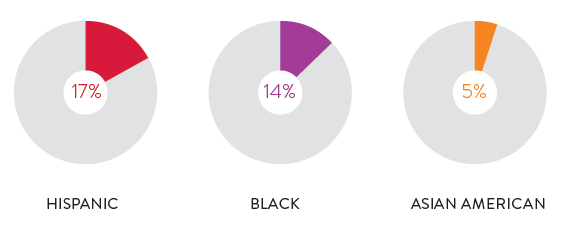The Multicultural Listener of the Future
Nielsen has released some interesting trend data on the future impact of a multicultural population. The implications are significant for programming and for advertising. Here is the report summary:

ALL EARS: MULTICULTURAL CONSUMERS ARE SHAPING THE FUTURE OF MUSIC
African-Americans, Asian-Americans and Hispanics—the “Multicultural” consumers—are taking the music industry by storm. According to current U.S. Census Bureau projections, the American consumer is increasingly the multicultural consumer; forecasted to become the majority of the U.S. population by 2043. Given that Multicultural consumers account for 31 percent of the total spend on music and, on average, spend $7 more on music than the total market, this growing group is increasingly influencing the music market.
Not only are these consumers shaping the musical taste of the U.S. population as a whole, but they’re also creating new and innovative ways to discover, buy and share music. Companies that wish to understand the future of music need to pay close attention to this growing demographic’s consumer habits.
Fifty-three percent of the Multicultural population is under age 35, compared with 45 percent of the country’s total population. And within the critical Millennial generation, 40 percent are Multicultural. Multicultural Millennials are young enough to consider music an essential component of their lives and old enough to have money to spend on it. And with these young consumers leading trends in smartphone use, online streaming and social media, they’ve become an essential asset to the music industry.
Advancements in technology have dramatically altered the way all consumers spend their money—especially when it comes to music. Decades ago, a music lover would have bought a record album and played it on a HiFi. Today music enthusiasts have even more avenues to listen to music. They can listen to their favorite songs on YouTube, download a single song from their smartphones in a matter of seconds or easily find tickets online to see the artist in concert. Live music has become especially important to Multicultural consumers, with the largest component of music spending on concerts and other live events.
Technology has also changed how consumers are finding new music. Instead of being limited to public settings such as school grounds or a workplace, consumers can now explore new music on various different social platforms. Artists today are often now discovered on an increasing number of social sites, such as YouTube, SoundCloud and the like.
So while Multicultural consumers report listening to 19 hours of music per week, which is about the same amount of time as the total population, their experience is significantly different. With more young listeners than the population as a whole, Multicultural consumers are more likely to use social media and various forms of technology to discover new music compared to the rest of the population. About 54 percent of Multicultural listeners rely on over-the air radio to discover new music, compared with 64 percent of non-Hispanic Whites.
Music is and will increasingly be driven by the new mainstream—Multicultural consumers. So how can the music industry find these consumers? Multicultural audiences are more likely to be early adopters of new technologies and devices than the population as a whole. Mobile is also important to reach Multicultural consumers: smartphones allow them to listen, buy and share music all within seconds. The ability to sample and access a wide spectrum of styles and embrace creative fusions of genres, languages and culture strongly influences the music this connected audience listens to and the artists they follow. Multicultural music fans are shaping music and increasing cultural confidence and global interconnectedness. And in the process, they’re creating new marketing opportunities for promotion of cross-platform goods and services that will only continue to expand in the future.
For additional insights into Multicultural music listeners, download the related reports:




